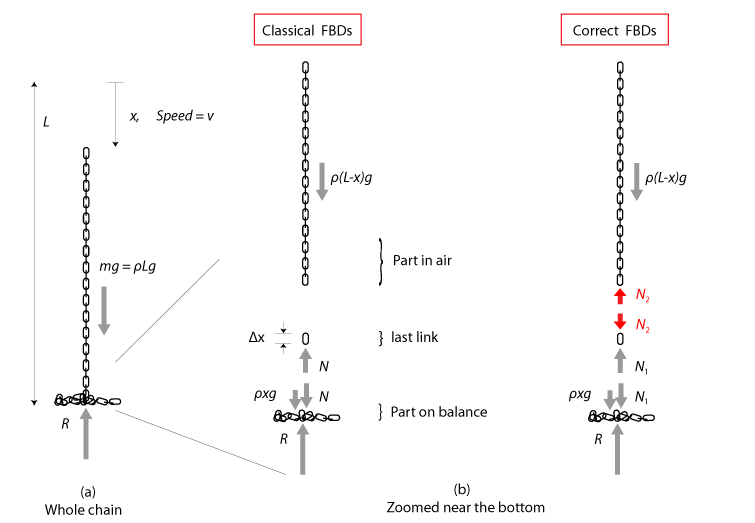What's Missing
What is Missing
from the classical explanation on the previous page?
Implicitly the previous analysis assumes that the last link stops only due to an impulsive reaction from the table. There is assumed to be no interaction between the last link and the chain above. Hence the upper portion of chain falls freely with acceleration g. Why shouldn't there be any force between the last link and the chain above?
It is intuitive to assume that when last link collides with the ground it also breaks away from the chain above with no interaction. But that is just an assumption. In principle there can be a force N2 with which the last link pulls down on the chain above it.
Implicitly the previous analysis assumes that the last link stops only due to an impulsive reaction from the table. There is assumed to be no interaction between the last link and the chain above. Hence the upper portion of chain falls freely with acceleration g. Why shouldn't there be any force between the last link and the chain above?
It is intuitive to assume that when last link collides with the ground it also breaks away from the chain above with no interaction. But that is just an assumption. In principle there can be a force N2 with which the last link pulls down on the chain above it.

What can N2 do ?... if it exists
If it's positive (pulling): it can make the chain section that is in the
air fall faster than gravity!
In some sense the
chain is being sucked by the surface its falling onto.
Can we make a chain which sucks itself on to the table it falls on?
This page was
updated on March 13, 2011